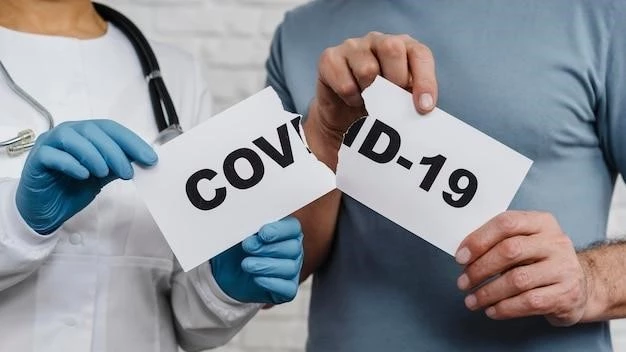History of Cowpox
Discovery of Cowpox
The discovery of cowpox is credited to Edward Jenner in 1796. Jenner observed that milkmaids exposed to cowpox did not contract smallpox‚ leading to the development of the smallpox vaccine. This breakthrough laid the foundation for modern vaccination practices.
Significance in the History of Medicine
The discovery of cowpox’s ability to provide immunity against smallpox revolutionized the field of medicine. Edward Jenner’s work with cowpox laid the groundwork for vaccination as a crucial public health measure‚ ultimately leading to the eradication of smallpox worldwide.
Symptoms of Cowpox Infection
Initial Symptoms
The initial symptoms of a cowpox infection typically include fever‚ fatigue‚ and a localized rash at the site of exposure to the virus. Patients may also experience headache‚ muscle aches‚ and swollen lymph nodes. These early signs are important for prompt diagnosis and management of the infection.
Progression of Symptoms
As a cowpox infection progresses‚ the rash typically evolves into pustules that ulcerate and scab over. Patients may experience pain and itching at the site of the lesions. In some cases‚ the lymph nodes near the infection site may become more swollen and tender. Monitoring symptom progression is crucial for appropriate treatment and recovery.
Transmission of Cowpox Virus
Modes of Transmission
Cowpox virus is primarily transmitted through direct contact with infected animals‚ particularly cows‚ cats‚ and rodents. Additionally‚ transmission can occur via contact with contaminated fomites or through respiratory droplets. Understanding the various modes of transmission is crucial for implementing effective control measures.
Risk Factors for Transmission
Several risk factors contribute to the transmission of cowpox virus‚ including occupational exposure to infected animals‚ lack of proper hygiene practices‚ and close contact with individuals or animals exhibiting symptoms of cowpox infection. Immunocompromised individuals are at higher risk of severe complications from transmission. Identifying and addressing these risk factors is essential for preventing further spread of the virus.
Prevention and Control of Cowpox
Vaccination Strategies
Vaccination remains the cornerstone of preventing cowpox infection. The smallpox vaccine‚ which provides cross-immunity to cowpox‚ has been instrumental in controlling the spread of the disease. Continued vaccination efforts‚ particularly in high-risk populations‚ are crucial for maintaining herd immunity and preventing future outbreaks.
Hygiene Practices
Implementing stringent hygiene practices is essential in preventing the transmission of cowpox. Regular handwashing‚ especially after contact with animals or their environments‚ can help reduce the risk of infection. Proper sanitation measures‚ such as cleaning and disinfecting surfaces and equipment‚ are also crucial in controlling the spread of the virus.

Treatment Options for Cowpox
Antiviral Medications
Antiviral medications may be prescribed to manage severe cases of cowpox infection‚ particularly in immunocompromised individuals or those with underlying health conditions. These medications can help reduce the severity and duration of symptoms‚ as well as prevent complications associated with the virus. Close monitoring by healthcare professionals is essential when administering antiviral treatments for cowpox.
Supportive Care
Supportive care plays a critical role in the treatment of cowpox infection by alleviating symptoms and promoting recovery. This may include pain management‚ hydration‚ and rest to help the body combat the virus. Monitoring for any signs of complications and providing appropriate care are key aspects of supportive treatment for individuals affected by cowpox.
Cowpox Outbreaks in History
Notable Outbreaks
Throughout history‚ notable cowpox outbreaks have emerged‚ with some instances leading to clusters of cases in communities. These outbreaks have highlighted the importance of swift public health responses and effective containment measures to prevent further spread of the virus. Studying past outbreaks provides valuable insights for managing future occurrences of cowpox.
Impact on Public Health
Cowpox outbreaks have had significant implications for public health‚ triggering responses aimed at containing the spread of the virus and protecting communities. The impact on public health includes heightened disease surveillance‚ vaccination campaigns‚ and educational initiatives to raise awareness about cowpox transmission and prevention. These measures are essential for safeguarding public health and mitigating the consequences of potential outbreaks.
Similarities Between Cowpox and Smallpox
Shared Characteristics
Cowpox and smallpox share similarities in their viral family (Poxviridae)‚ mucocutaneous lesions‚ and potential for zoonotic transmission. Both infections can present with fever‚ rash‚ and pustules‚ although smallpox historically had higher morbidity and mortality rates. Understanding these shared characteristics is essential for accurate diagnosis and appropriate management of viral infections.
Distinctions
Despite their similarities‚ cowpox and smallpox have distinct differences such as the severity of illness‚ with cowpox generally causing milder symptoms. Smallpox is eradicated‚ while cowpox persists in animal reservoirs. Additionally‚ smallpox vaccination does not confer complete immunity to cowpox. Understanding these differences is crucial for accurate diagnosis and appropriate management of each virus.
Research Developments in Cowpox Vaccines
Current Vaccination Research
Ongoing research in cowpox vaccines focuses on enhancing vaccine efficacy‚ safety‚ and accessibility. Scientists are exploring novel vaccine delivery methods‚ adjuvants‚ and formulations to improve immune responses and durability of protection. Additionally‚ studies are evaluating the potential use of cowpox vaccines in high-risk populations and exploring their role in emerging infectious disease prevention strategies.
Future Prospects
The future of cowpox vaccines holds promise for advancements in immunization strategies‚ including the development of next-generation vaccines with improved immunogenicity and broad-spectrum protection. Efforts are underway to address challenges such as vaccine durability‚ supply chain optimization‚ and global distribution to ensure effective control of cowpox and related diseases. Continued collaboration between researchers‚ public health agencies‚ and pharmaceutical companies will drive progress in the field of cowpox vaccination.
